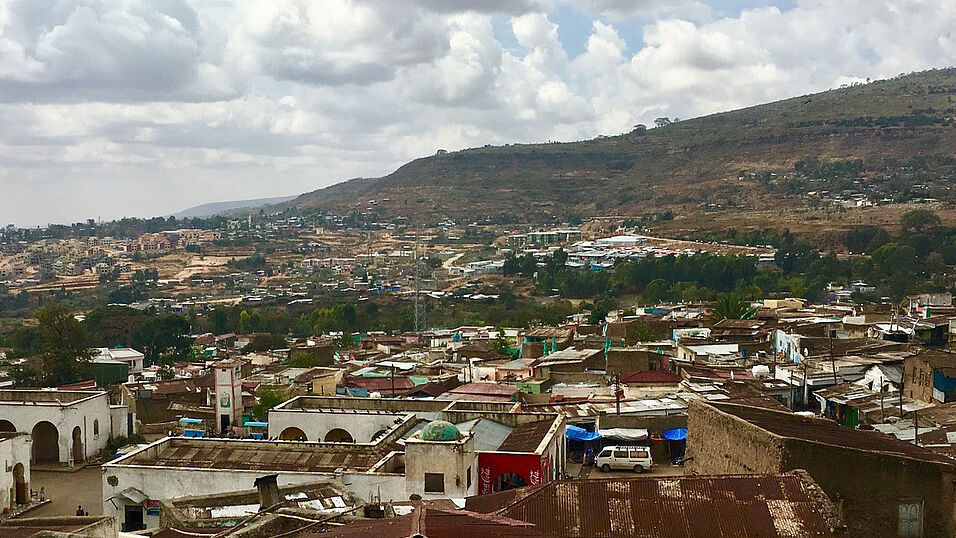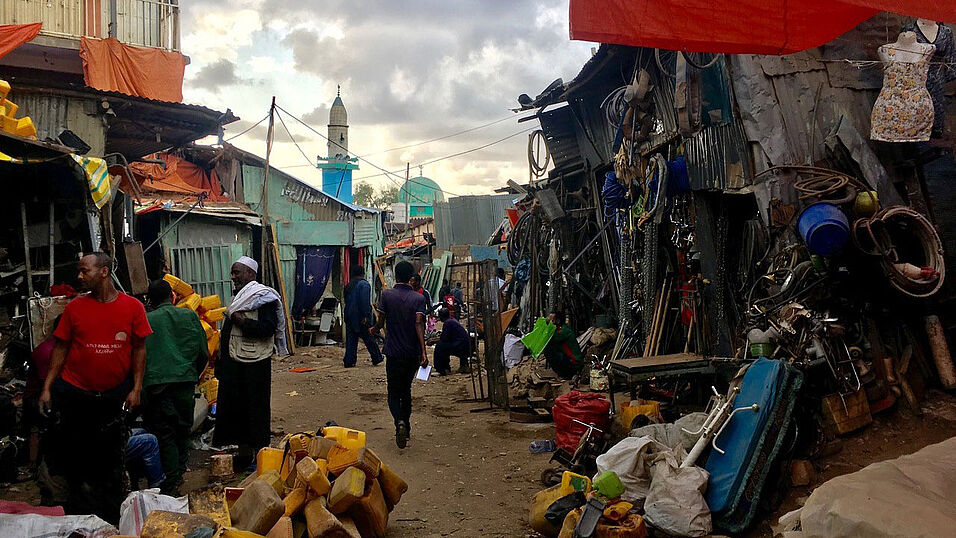Lemlem Fitwi Weldemariam, a PhD student at the Department of Geography and Regional Research, built the bridge between the Universities in Vienna and Haramaya. She was born in Ethiopia and studied and worked at Haramaya University, before being an APPEAR* scholar at the Department of Geography and Regional Research in Vienna.
Geographer Marion Borderon, Assistant Professor at the University of Vienna, crossed this bridge and initiated a new Agreement on Academic Collaboration with Haramaya University in Eastern Ethiopia, to build up a new research focus on the nexus of migration and environmental change.
Vulnerability and risk analysis
Marion Borderon has specialised in concepts and methods for the analysis of vulnerability and risk in the context of environmental transformation. She has conducted research in limited data settings and has significant experience in population-based surveys and data analysis in the Global South. She describes the main obstacles for her research: “To unravel migration patterns you need robust and reliable data. This is hard to obtain at a local scale and in rural deprived areas. Yet rural areas are more exposed to environmental stressors as most of the population depends on natural resources.”
Ethiopia fits into the research topic that she wants to explore in greater detail: “Migration is a complex phenomenon. Moving from one place to another is the result, but there may be lots of reasons behind this decision. Our key question is: Are there specific biographic events in the life of people that increase the probability to move? We want to learn about environmental push factors e.g. droughts and how they might influence the decision.”
Research institutions in Ethiopia
Together Marion Borderon and Lemlem Fitwi Weldemariam travelled to Ethiopia in October 2017 to visit research institutions, especially Haramaya University in the Oromia Region (in the East), some 500 kilometres from the capital Addis Ababa. There they met the Vice President for Research Affairs and Dr. Nega Assefa, a researcher in Haramaya University with a specialty in Reproductive Health, Maternal and Child Health. Nega Assefa has been leading the Health and Demographic Surveillance under Haramaya University for several years and now leading UNIVIE partnership with Haramaya University. He works for the Demographic Surveillance and Health Research Center (KDS-HRC) – one in fifty centers worldwide, which were set up 20 years ago to monitor population dynamics in deprived regions without regular census.
Research teams track the rural population of Kersa since 2007: “The teams visit around 130.000 people twice a year. They gather important statistical data on demography, e.g. births, migration, mortality and morbidity. They register changes in the population. It is quite compelling and rare to have data like this.” The KDS-HRC has a vision to become a center of excellence in health science research in Ethiopia.
“Put hands into the data”
Marion Borderon shares her motivation: “Migration has been rather neglected in the analysis of HDSS (Health and Demographic Surveillance Systems) data. Yet the data of the Kersa center could be of great interest in the field of migration studies.” After the trip in October 2017, she returned to Ethiopia in February 2018 to “put her hands into the data”. She is amazed: “Over a period of ten years we know a lot about families and their relations, the socioeconomic status, the profession, we know who married whom, when, who died, who is new in the area. So we can search for causal relations on a fine scale.” Together with her colleagues in Ethiopia and statistics, “we will try to find general patterns. We may be able to answer our key question: Which biographical events trigger or have an impact on inward and outward migration?”
Agreement for long term cooperation
Nega Assefa and Marion Borderon initiated an agreement for long term cooperation. The agreement is a frame that will be filled with activities. The research groups at the two Universities will start with data analysis, exchange and training in statistical methodology and publications: “Our common history begins with this agreement. It will help us to obtain grants in the field of migration and rural change in the areas of origin, a burning issue in the current research landscape. We could also extend our work by using qualitative methods to go deeper into the biography of (im)mobile people and their aspirations.”
Marion Borderon secured additional funding with her PostDoc award of the University of Vienna. Together, the international team has already submitted proposals in the European Horizon 2020 programme.
- Agreement on Academic Collaboration: between the Faculty of Earth Sciences, Geography and Astronomy of the University of Vienna and the Haramaya University ; approved: March 2018; duration: 5 years. The Agreement on Academic collaboration aims to develop joint research activities on the topic of migration and demography in the Kersa region. Together with the Kersa Demographic Surveillance and Health Research Center (KDS-HRS) the Department of Geography and Regional Research will work and assess the rich data collection, exchange scientific experience in statistical methodology and publish together.
- Scientific Contacts:
University of Vienna; Faculty of Earth Sciences, Department of Geography and Regional Research: Dr. Marion Borderon (http://population.univie.ac.at/en/)
Haramaya University, Kersa Demographic Surveillance and Health Research Center KDS-HRS: Dr. Nega Assefa (http://www.haramaya.edu.et/research/projects/kds-hrc/)
* Stipend for Higher Education and Research for Development of the Austrian Development Agency. Ethiopia is a focus country of Austrian Development Agency since 1992.




